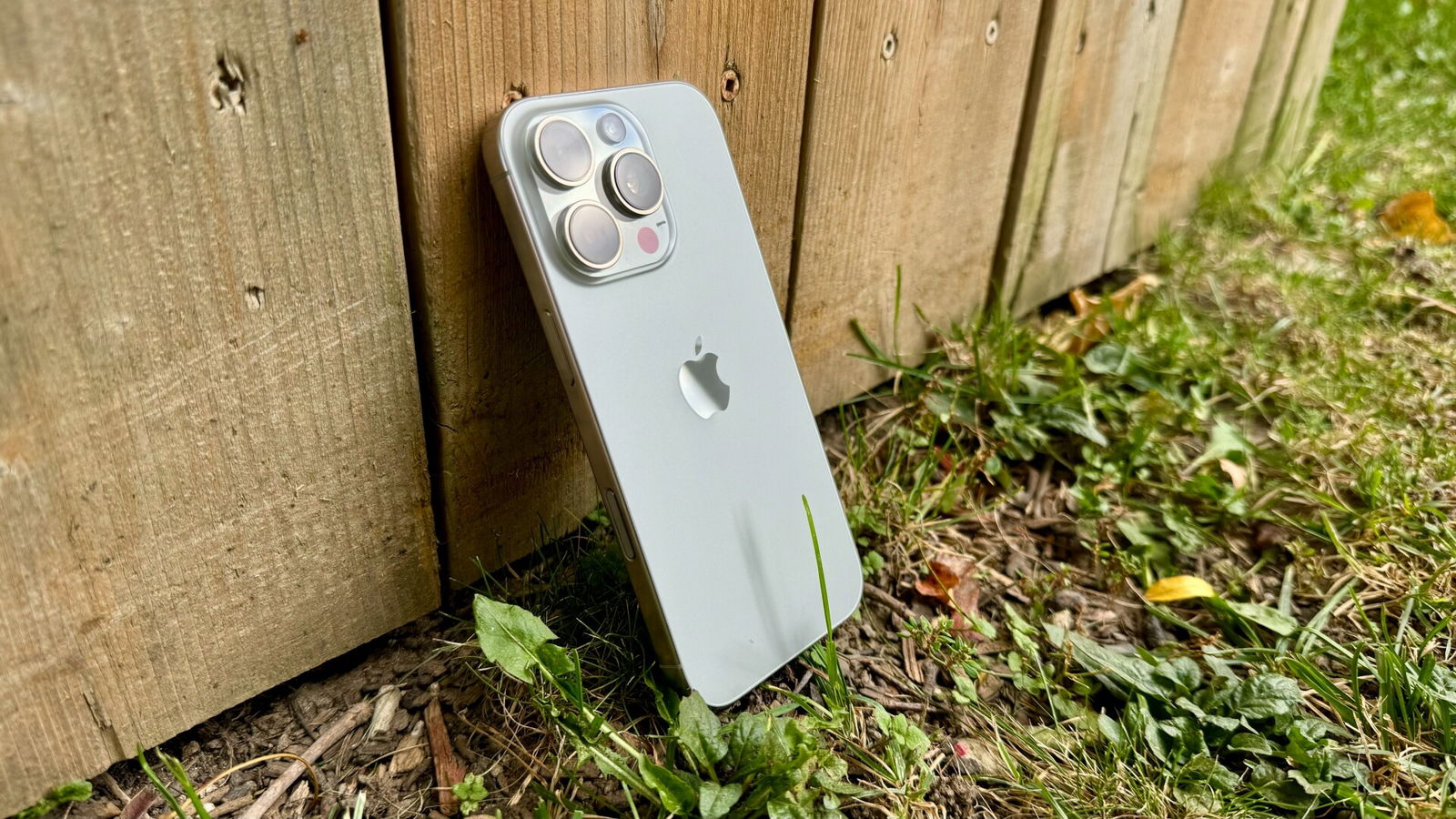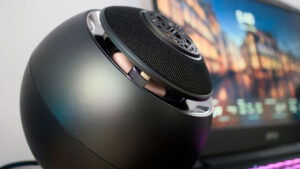Last year, I wrote that the iPhone 15 Pro felt “like the wind-up to a future knockout punch in the line’s next installment.” Now that the Apple iPhone 16 Pro has arrived, that haymaker has landed.
The lifecycle of smartphones should be familiar by now, especially with Apple devices: each fall, a new generation is announced with its own set of incremental upgrades and a standout feature or two. For the iPhone 14 Pro, it was the always-on display and Dynamic Island; last year brought the iPhone 15 Pro with a standardized USB-C connection and the impressive A17 chip, which pushed the platform toward gaming greatness.
In 2024, the iPhone 16 family is focused on the new Camera Control button, which acts as a tactile shortcut to its advanced Fusion Camera system. It’s the kind of simple, intuitive addition that makes you wonder how you got by without it, and it shines on the iPhone 16 Pro. Combined with some new features in iOS 18, this could very well be the start of a new era for Apple’s smartphones.
iPhone 16 Pro: Specs
Let’s start with the numbers. Compared to last year’s Pro, the iPhone 16 Pro’s screen measures 6.3 inches—a slight 0.2-inch improvement on paper, but enhanced by the virtue of having some of the thinnest bezels on a smartphone to date, enabling a 2622×1206 resolution. It’s 0.12 inches taller, 0.9 inches wider, and weighs 12 grams more, yet the device maximizes the screen area without feeling any bigger by comparison.
In almost every parameter, the new model boasts the same specs—Super Retina XDR, all-screen OLED, and HDR display, refreshing up to 120Hz, etc.—but there is one brilliant, underrated detail. The iPhone 16 Pro has reached a minimum brightness of 1 nit, which is about as little light as a screen can emit. This is an excellent companion for the always-on display.
Thanks to these features, the iPhone 16 Pro feels more like using a DSLR than most smartphones.
The new A18 chip that powers this year’s iPhone Pro is a small but noticeable upgrade. Like last year, it’s supported by a 6-core CPU, 6-core GPU, and 16-core Neural Engine, but the overall architecture is improved, primarily to support new machine learning features like Apple Intelligence and advanced processing for photos and videos. Thanks to this chip, you’ll also see an improvement in the quality of game graphics, as the hardware continues to raise the ceiling for what developers can achieve on a smartphone; “ultra” settings are now more worthwhile than before.



However, the updated camera system is Apple’s big star this year. The main lens in the array is the 48MP Fusion camera—with “fusion” referring to the behind-the-scenes processing that enhances your photos. It’s supplemented by a 48MP Ultra Wide lens (a significant leap from the iPhone 15 Pro’s 12MP) and a 12MP Telephoto lens, along with the virtually unchanged 12MP front camera.
The iPhone 16 Pro boasts Apple’s most impressive smartphone battery to date, rated for up to 27 hours of non-streamed video playback, 22 hours of streamed video playback, or up to 85 hours of audio playback. I noticed slightly better consumption rates during standard operation, though games still tax the battery significantly. I still can’t see myself going 2-3 days on a single charge unless I were to use the device minimally. Nonetheless, progress is progress, and it’s good to see the battery keeping pace, at least, with the rest of the tech.
iPhone 16 Pro: Design
Moving to the exterior, the iPhone 16 Pro comes in more modern tones than its lower-level counterparts. While the standard iPhone 16 models feature vibrant hues for their aluminum and glass-backed casings, the Pro’s titanium shell opts for more marble-toned colours: desert titanium, natural titanium, white, or black. The natural titanium model I reviewed is a stately shade of grey, lending the phone a feeling of durability while retaining a light, airy feel.

As mentioned earlier, this year’s Pro doesn’t feel much different from the last, in all the right ways. Side by side in standard Apple-issue silicone cases, they’re virtually identical; even the cameras appear similar, despite the upgrades under the hood. (The regular iPhone 16 and 16 Plus, however, stand out with their two vertical cameras.)
They’d be even harder to tell apart without the iPhone 16 Pro’s Camera Control button, located on the lower-right side. Like the action button above the volume controls on the upper-left, the new button acts as a programmable shortcut. By default, it brings up the Camera app, which is perfect for those fleeting moments when you need to capture a subject quickly.
Once inside the app, the control button can function as a shutter with a full press. Alternatively, you can “half” press to bring up manual zoom adjustment, sliding your finger along the button in either direction to zoom in or out. It can take some time to get used to pressing with the right amount of pressure to activate this shortcut properly (it works noticeably better with haptic vibrations enabled to help gauge when you’ve pressed it correctly).


Thanks to these features, the iPhone 16 Pro feels more like using a DSLR than most smartphones—a capability I appreciate when I can’t easily have my proper camera with me. Having professional-level tech like this readily at hand is invaluable for quickly capturing moments with kids or pets. Meanwhile, more advanced photographers will enjoy exploring the various intricacies of this camera array.
Apple’s standard silicone case includes a Camera Control interface on the side, offering seamless protection without sacrificing this signature new feature. Admittedly, it doesn’t function as perfectly through the extra layer, but at least you don’t have to sacrifice function for security.

Application
We now come to the true test of any smartphone: how well it functions in your daily life and how it enhances the apps and tools you rely on most for utility, communication, or entertainment. Since it shares much in common with its predecessor, it should come as no surprise that the iPhone 16 Pro is an application powerhouse.
I’ve always liked the Pro-tier of iPhones, as they hit that sweet spot between the ultimate power of Apple’s Pro Max devices and the relatively lower price tag of the standard iPhone and Plus. They tend to be more advanced than the base model, but you aren’t paying for top-tier creative and processing features that the vast majority of users don’t utilize. This year’s model continues that trend.
The iPhone 16 Pro handles games, utilities, creative apps, media, and social apps with ease. While the 15 Pro is by no means slow by any conceivable metric, the new model generally operates just a bit smoother when running the same apps on the same network.


One of the biggest selling points of the iPhone 16 Pro and iOS 18 during Apple’s grand reveal was their integration of Apple Intelligence, a suite of machine learning-enabled features designed to make their smart devices more intuitive to use. This feature will roll out in American English later this month (and in Canadian English in December), so as of publication, I haven’t put these new tricks to the test. In theory, they sound like the kind of tasks machine learning should be focused on—smaller, menial tasks that enhance productivity.
For instance, the Messages app might summarize a long series of texts that came in while you were unable to check your phone, while Photos will be able to search through your vast Camera Roll to find a specific picture or instantly curate themed collections. Siri will interact with things you quickly snap with the Camera Control button, like adding events from fliers or checking a business’s information. Call and video audio can also be better filtered, either removing the sound of wind during a phone call or recording cinema-level video. The A18 Pro chip was optimized to fuel these functions, though we haven’t yet seen the full difference they can make.
iOS 18 has, however, introduced a few welcome additions that make the iPhone 16 Pro (and its counterparts with other Apple Silicon chips) even sleeker. Game Mode pairs well with the Pro’s power by prioritizing games and reallocating computing power from background processes to ensure performance doesn’t suffer. There’s more customization than ever before, from how buttons function in certain Focus modes to the long-desired ability to freely rearrange Home Screen icons. While these features aren’t specific to this phone, they do enhance the overall experience.


One of my favourite features is the camera’s ability to record in 4K at 120fps. While I don’t usually worry about the frames-per-second count in my PS5 games, being able to capture big moments in my family’s adventures with video this silky smooth is invaluable. Otherwise, the photo camera takes some experimentation to get fully acclimatized and ensure the best results. It works well as a pick-up-and-shoot camera, but to get the most out of your investment in this advanced array, users should dedicate time to learning the new features, taking plenty of photos, and experimenting with the results.
The iPhone 16 Pro’s refined camera processes extend to another invaluable new feature: Photographic Styles. These take filters to the next level; instead of simply applying a filter across an entire photo, the iPhone uses the filter situationally depending on the subject. If you’re taking a portrait, for example, it will prioritize your subject’s skin tones and apply the effect to the other areas of the photo accordingly.
Lastly, an undersold feature that I love on the iPhone 16 Pro is the speakers. The acoustics on this year’s model are even more nuanced than before.
Conclusion
Every time the newest smartphone drops, consumers are left pondering, “Should I upgrade?” This year, I can confidently say that, yes, it is worth upgrading to the iPhone 16 Pro (depending on your personal situation, of course).
If you use your current smartphone to play games or create content, you’ll notice a decent uptick in performance and efficiency on this year’s iPhone Pro. Even if you mainly use it to capture random daily moments or outings with friends and family, the sophisticated new camera will preserve those memories with greater clarity. Even without the full utility of the Apple Intelligence suite in place, the iPhone 16 Pro strikes me as the most exciting new iPhone since the Apple Silicon era began.








